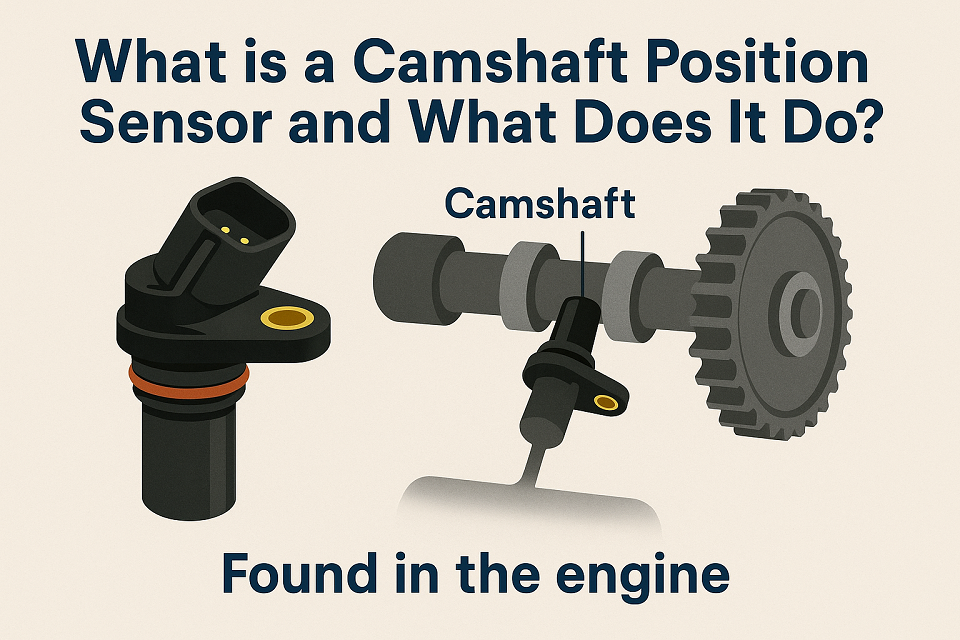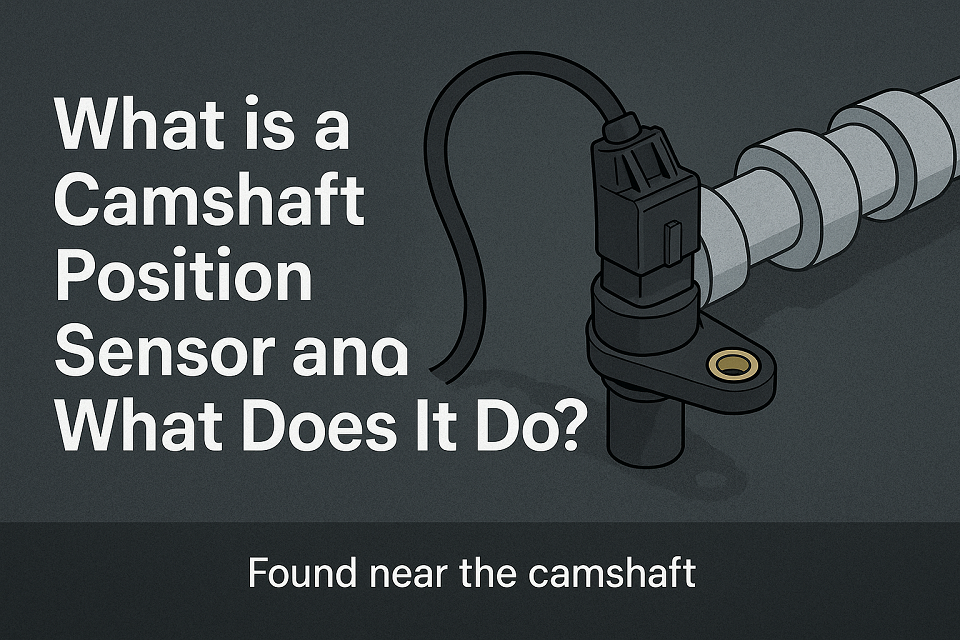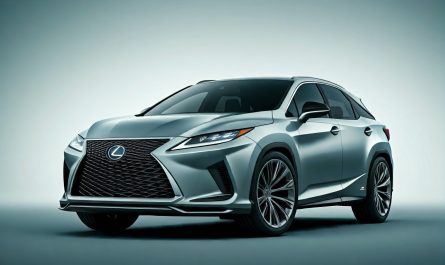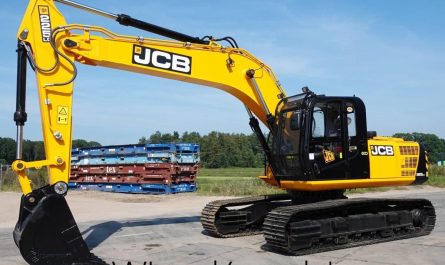Introduction
In the complex ecosystem of internal combustion engines, myriad components must operate in precise harmony to optimize performance, fuel economy, and emissions. Among these critical components is the camshaft position sensor—a compact yet technologically sophisticated device that plays a vital role in modern engine management systems. Despite its modest size, the sensor’s function is fundamental to maintaining proper engine timing and operational efficiency. For automotive engineering students and professionals, a deep understanding of this sensor reveals insights into contemporary engine control strategies. This article presents a comprehensive examination of the camshaft position sensor: its structure, function, technical relevance, and diagnostic considerations.

The Camshaft: Functional Overview
To grasp the operational context of the camshaft position sensor, one must first comprehend the role of the camshaft itself. The camshaft is a precision-machined shaft equipped with cam lobes designed to actuate the intake and exhaust valves of an engine. Its rotational motion, synchronized via a timing mechanism (usually a chain or belt) with the crankshaft, governs the valve timing essential to the engine’s four-stroke cycle: intake, compression, power, and exhaust.
Each lobe on the camshaft exerts force on a rocker arm or directly onto a valve tappet, facilitating valve opening at calibrated intervals. This synchronization between the camshaft and crankshaft is essential. Any deviation in timing can precipitate suboptimal combustion events, power losses, or even mechanical interference in interference-type engines, potentially causing catastrophic engine damage.
Defining the Camshaft Position Sensor
The camshaft position sensor—frequently abbreviated as CMP sensor—is an electromechanical device that relays real-time positional data regarding the camshaft to the engine control unit (ECU). This sensor monitors the rotational position and speed of the camshaft, allowing the ECU to determine the precise valve actuation timing in relation to piston position, which is simultaneously tracked via the crankshaft position sensor.
Functionally, the CMP sensor serves as a primary feedback element in the closed-loop control architecture of the ECU. It ensures accurate fuel injection timing, spark ignition sequencing, and coordination of advanced systems like variable valve timing (VVT).
Operational Principles and Sensor Typologies
Camshaft position sensors employ different sensing principles based on the vehicle’s make and design requirements. The two predominant sensor technologies are:
- Hall Effect Sensors: Utilize a magnet and a Hall element to detect the presence of a ferrous trigger wheel or reluctor attached to the camshaft. Disruptions in the magnetic field generate voltage pulses, which the ECU interprets as camshaft position signals.
- Optical Sensors: Incorporate a light-emitting diode (LED) and phototransistor separated by a slotted rotating disk. As the camshaft rotates, the slots allow or block the light, producing a pulsed output corresponding to camshaft angular displacement.
Both types generate high-frequency signals during engine operation, which are processed by the ECU’s microcontroller to inform fuel delivery, spark timing, and valve actuation in real-time. The fidelity of these signals is essential for the accuracy of engine management strategies.
Technical Importance in Engine Management
The CMP sensor is a cornerstone of modern automotive engine control. Its contributions include:
- Precise Fuel Injection Timing: The ECU leverages camshaft positional data to determine the exact crank angle at which each cylinder’s intake valve opens, ensuring the fuel is injected optimally relative to piston movement.
- Accurate Ignition Timing: The sensor enables synchronization of spark plug firing with the engine’s mechanical cycle, which is crucial for engine efficiency and knock prevention.
- Control of Variable Valve Timing (VVT): CMP data is integral to VVT systems that alter camshaft phasing to improve torque, fuel efficiency, or emissions depending on driving conditions.
- Catalyst Protection and Emissions Reduction: Proper valve and ignition timing reduce unburnt hydrocarbons and NOx emissions, thereby supporting compliance with stringent environmental regulations.
- Redundancy and Safety: Combined with crankshaft sensors, the CMP sensor provides redundant positional data, enabling the ECU to operate the engine in limp-home mode in case of partial system failures.
Failure Modes and Diagnostic Indicators
The degradation or malfunction of a camshaft position sensor can manifest through various symptomatic behaviors, many of which are logged as diagnostic trouble codes (DTCs) by the ECU:
- Illumination of Check Engine Light (CEL): Codes such as P0340 (Camshaft Position Sensor Circuit Malfunction) or P0341 (Range/Performance) are commonly associated.
- Engine Misfires or Hesitation: Incorrect camshaft timing leads to ignition events occurring outside optimal windows.
- Extended Crank Time or No Start: Without positional feedback, the ECU may disable ignition or injection circuits.
- Sudden Engine Stalling: Signal dropout may cause engine shutdown during operation.
- Suboptimal Fuel Economy: Inefficient combustion cycles can result from delayed or premature fuel and spark events.
Etiology of Sensor Malfunction
Several mechanical and electrical stressors contribute to CMP sensor failure:
- Thermal and Vibrational Fatigue: The harsh operating environment can lead to sensor delamination or solder joint cracking.
- Contamination: Oil ingress from failing camshaft seals can short circuit optical or magnetic sensor internals.
- Connector and Wiring Failures: Oxidation, corrosion, or mechanical abrasion can disrupt signal integrity.
- Manufacturing Defects or Installation Errors: Substandard aftermarket parts or improper torque application during installation may compromise function.
Diagnostic Protocols for Fault Isolation
Identifying CMP sensor faults requires systematic diagnostic methods:
- Electronic Control Unit Scan: Using OBD-II scanners to retrieve DTCs and freeze-frame data.
- Visual Inspection: Examination of the sensor, harness, and connectors for contamination or damage.
- Signal Tracing with a Multimeter or Oscilloscope: Verifying voltage output, waveform shape, and continuity under crank and run conditions.
- Correlating CMP and CKP Signals: Advanced diagnostics may include comparison with crankshaft position data to confirm synchronicity.

Sensor Replacement Considerations
Sensor replacement is generally a low-complexity procedure involving the following:
- Component Cost: OEM or high-quality aftermarket sensors range from $50–$150.
- Labor: Professional labor rates typically add $50–$150, depending on sensor accessibility.
- DIY Viability: Technically inclined individuals can perform the replacement with a basic socket set and adherence to service manual torque specifications.
During installation, ensure electrical connectors are seated correctly, mounting surfaces are clean, and any O-rings or seals are properly installed to prevent oil leakage.
Preventive Maintenance and Longevity
To extend the operational life of camshaft position sensors:
- Maintain Oil Integrity: Regular oil changes prevent sludge buildup that may encroach upon the sensor.
- Correct Fluid Leaks Promptly: Timely repair of valve cover or camshaft seal leaks avoids contamination.
- Use High-Quality Components: Employ OEM-grade or certified aftermarket parts.
- Engine Temperature Regulation: Ensure optimal cooling system function to reduce thermal cycling effects.
- Gentle Engine Load Cycling: Avoid aggressive driving patterns that amplify vibrational stresses.
Integration with Broader Engine Sensor Networks
The CMP sensor does not function in isolation. It is a critical node in the ECU’s broader sensor suite, which includes the crankshaft position sensor (CKP), throttle position sensor, manifold absolute pressure (MAP) sensor, and more. Synchronization between the CMP and CKP sensors is especially vital in engines employing sequential multi-port fuel injection or VVT.
Many modern multi-bank engines (e.g., V6, V8) utilize multiple CMP sensors—one for each camshaft or cylinder bank—to ensure accurate timing adjustments across all valvetrains. This enhances efficiency and responsiveness under various load conditions.
Conclusion
In sum, the camshaft position sensor is a high-precision instrument critical to the real-time control of modern internal combustion engines. Through continuous feedback of camshaft angular position and velocity, the CMP sensor empowers the ECU to achieve optimized fuel economy, power delivery, emissions performance, and drivability.
For automotive engineers and technicians, mastery of the camshaft position sensor’s design, operation, failure modes, and diagnostic processes is essential for competent vehicle diagnostics and performance optimization.


